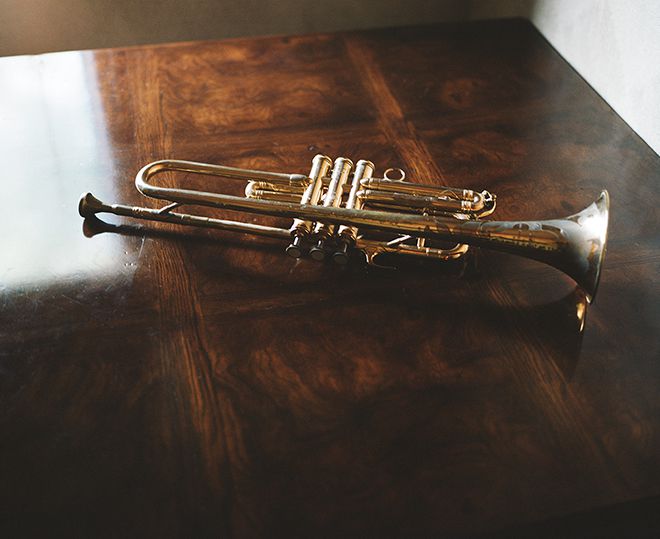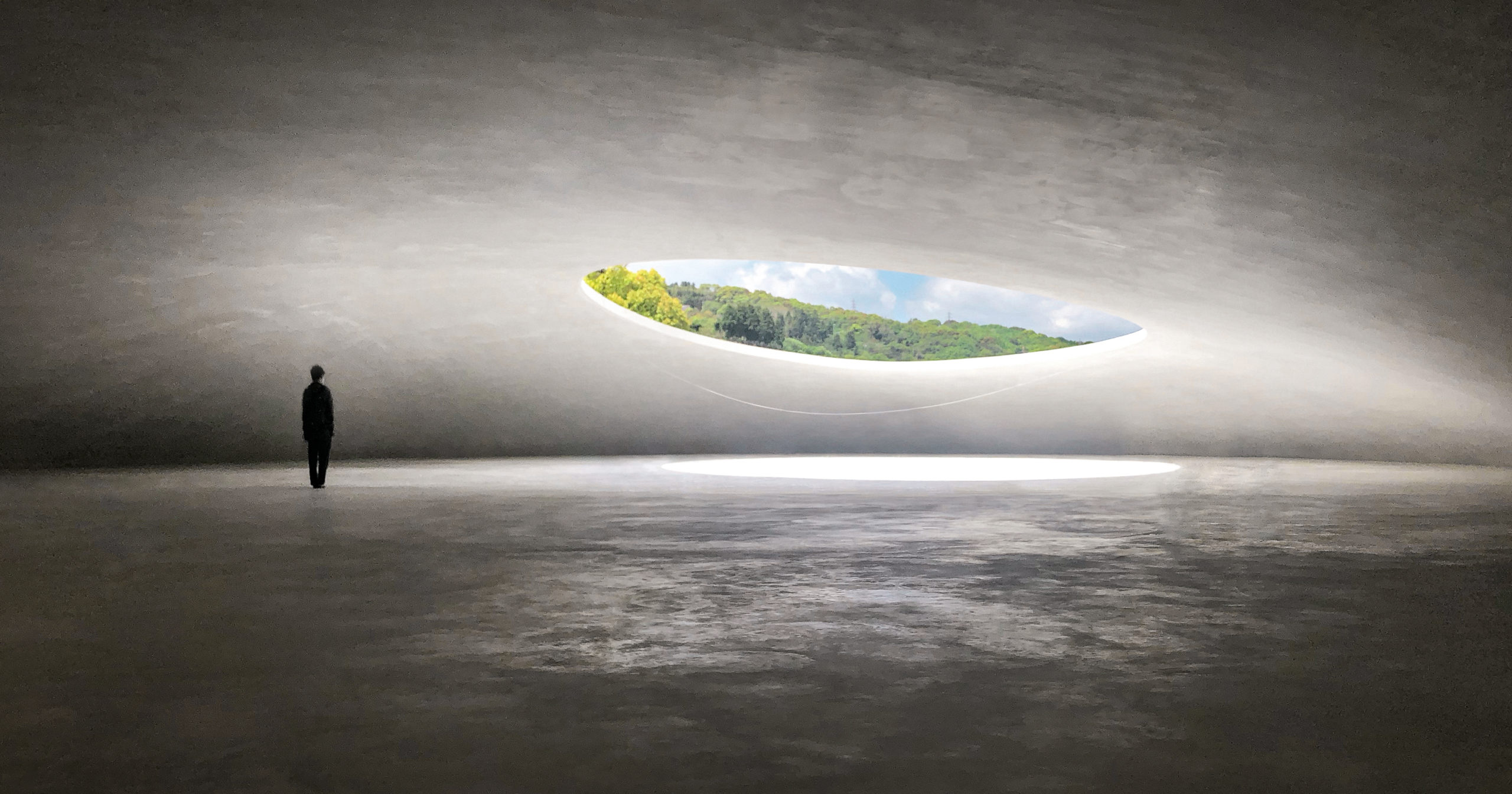New York is known for its museums. Before their closure due to COVID, iconic museums like the Met, MoMA, and the Museum of Natural History would draw millions of tourists to the city each year.
Next to these major institutions, New York’s smaller museums are often overshadowed. This is a shame. New York City isn’t just an international megalopolis, it also has its own local history, which is reflected wonderfully in the city’s great house museums. These include the Merchant House Museum in the East Village, the Wyckoff Farmhouse Museum in East Flatbush, Brooklyn, and the Edgar Allan Poe cottage in the Bronx.
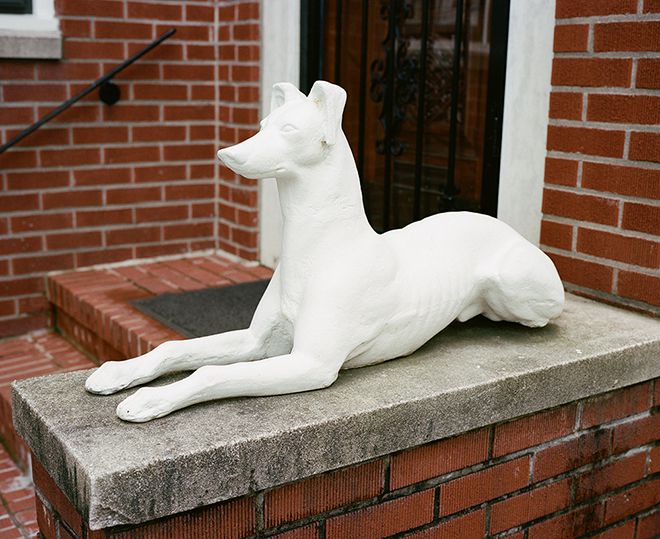
A plaster dog guards the entrance to the Louis Armstrong House Museum in Corona, Queens.
The most charming house museum of all can be found in Corona, Queens, a neighborhood that the New York Times’ M.H. Miller described as “a suburb wedged into the city.” The Louis Armstrong House Museum is where the jazz great lived from 1943 until he passed away in 1971, and it stands today not just as a testament to his musical legacy, but as a remarkable, real-life example of suburban midcentury design.
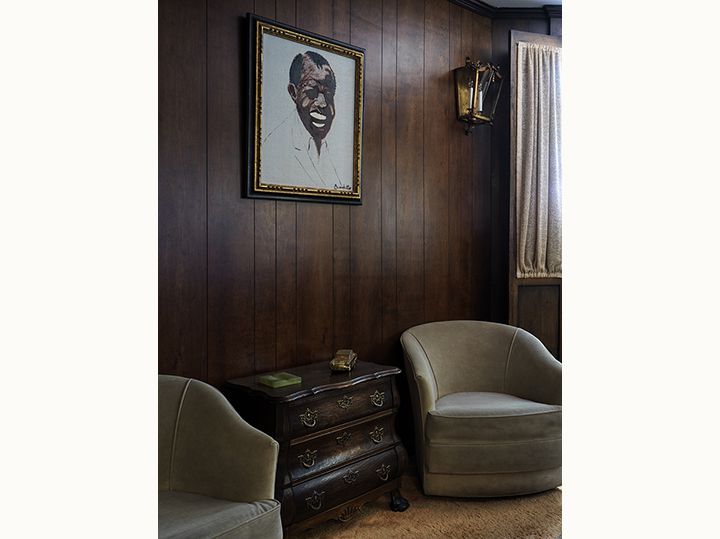
Lucille Armstrong decided to purchase a house in Corona because it was an integrated working class neighborhood.
The 3,000 square foot, two bedroom house is anything but ostentatious. Louis’s wife Lucille purchased the house behind her husband’s back during a period when he was often on the road. (This is a story for another article). Although Louis was, at the time, one of the world’s best-known and most esteemed entertainers, Lucille wasn’t looking for luxury. She wanted to settle down in a low-key neighborhood, which is why she selected Corona, where she had spent part of her childhood.
Louis, too, appreciated the fact that Corona was an everyday, working-class neighborhood. He also loved the fact that it was among the first integrated neighborhoods in New York. At the time Corona was home to a mix of mostly African-American and Italian families.
From the outside, the house looks just like the other detached houses on the block, save for the fact that it has a brick façade rather than the more common vinyl siding. The façade was originally vinyl, but Lucille replaced it with brick to give the property a more stately feel. When construction began, Louis told the other homeowners on the block that he would pay for their houses to be outfitted in brick too, if they were interested. (He never liked standing out—except on stage). A few did take up the offer, which is why there is a scattering of brick houses on the block today.
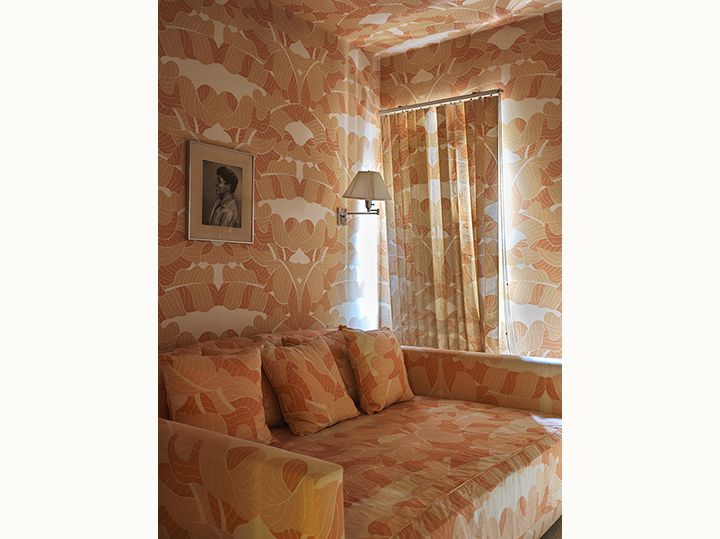
In the guest room, the botanical pattern on the wallpaper matches the couch. A portrait of Lucille hangs on the wall.
Inside, however, the house is quite unique, as it is decorated in the exquisite style of another era. The final renovations were made in 1969, with the help of interior decorator Morris Grossberg, and reflect the Armstrongs’ love of eclecticism. “I guess ‘Rococo’ is the word I could use without losing my job,” explained museum director Hyland Harris, adding that no two rooms are alike.

The most ornate room in the house is the first-floor bathroom, featuring floor-to-ceiling mirrors and a sink made from an antique birdbath.
The only room that truly screams “Rococo” is the first floor bathroom, which features floor-to-ceiling gold-rimmed mirrors, a marble bathtub and gold plated swan fixtures. The carved marble sink was created from an antique French birdbath. Reportedly, this was one of Louis’s favorite rooms in the house.

This state-of-the-art 1969 kitchen features custom-made appliances by Crown.
The kitchen was described by Miller as an example of “space age futurism,” perhaps inspired by the 1964 World’s Fair, which took place just blocks from the house in Flushing-Meadows Corona Park.
“There are clear acrylic shelving units, a blender installed into a countertop, a can opener built into a wall and a bespoke Crown stove with six burners, two broilers, two ovens and a small gold placard that reads ‘Custom Made by Crown for Mr. and Mrs. Louis Armstrong,’” Miller explains. “The cabinets are lacquered a deep blue — a shade that, in a certain light, looks like the color of the Earth as seen from space, a hue similar to Lucille’s beloved Cadillac.”

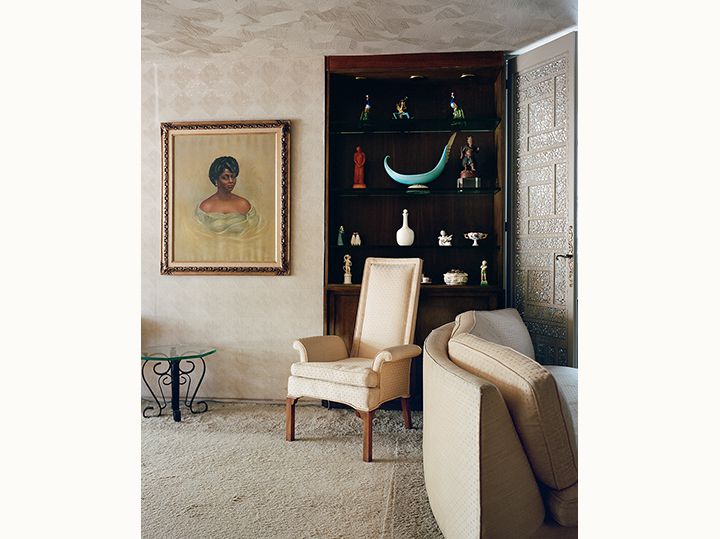
Visitors describe the living room as nostalgic. It is one of the more subdued sections of the house.
The living room is a bit more subdued and visitors to the museum often find it nostalgic, according to Harris. The carpeting is plush and the furniture tastefully minimalist. Against the wall, there is a small upright piano that displays a Louis Armstrong bobblehead figurine.
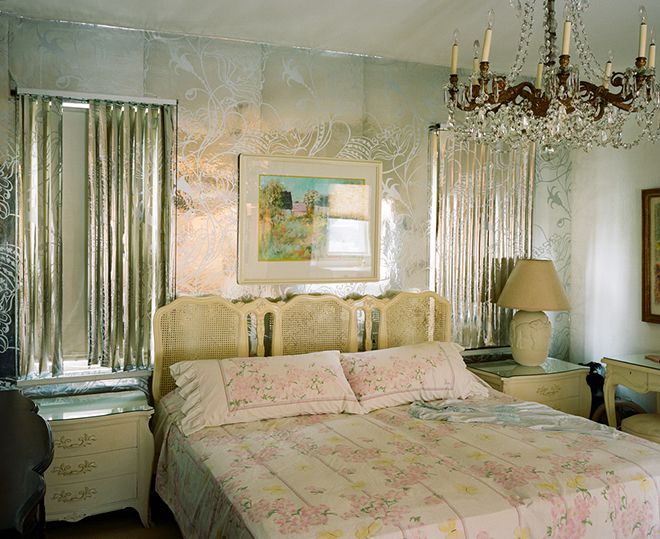
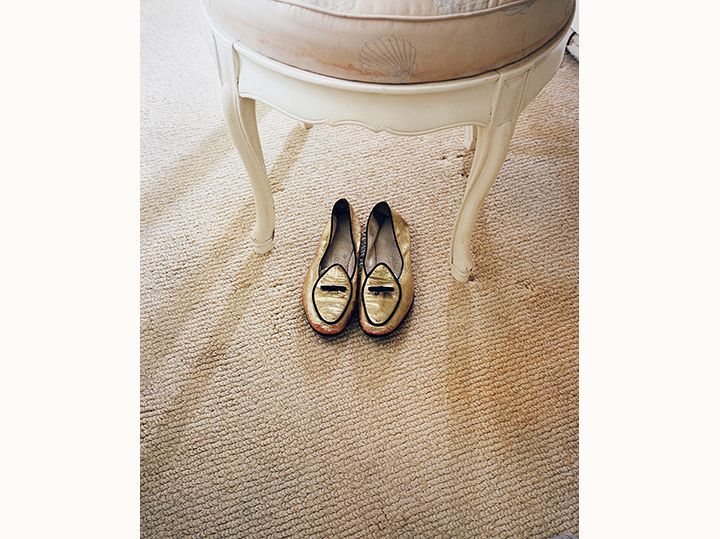
Louis’s slippers are still tucked away in the bedroom.
The personal touches are really what brings this house museum to life. Lucille’s portrait hangs in the incredible guest room, in which the upholstery of the couch matches the botanical pattern of the wallpaper. And in the bedroom, a half-used bottle of Louis’s favorite Lanvin cologne still stands on the dresser.

Louis’s den is the room that captivates the most visitors.
The upstairs den is the room that usually captivates visitors the most. “To this day, it houses his liquor cabinet (still stocked as it was at the time of his death, including a half-drunk bottle of Jack Daniel’s), his desk and typewriter, his record collection, which included works by more avant-garde jazz masters (Miles Davis, Thelonious Monk) and his reel-to-reel tape machine, a gadget by which he documented his remarkable talent for the spoken word,” explains Miller.
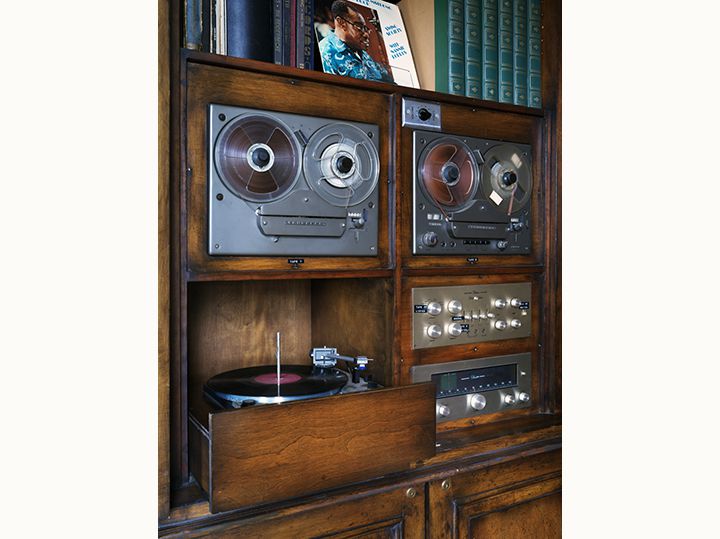
Louis’s home recordings are a treasure trove for jazz historians.
Louis left behind 700 personal recordings, an incredible resource for jazz historians. In some of them, he speaks about the life he led in the house with Lucille. “She gave me a room and made a den out of it,” Louis says in one recording. “You know what I mean? That really knocked me out.” As a child, he continues, “we couldn’t afford no den . . . we’d rather sleep in that room.”
After Louis died in 1971, Lucille stayed in the house until her own death in 1983, taking care not to make any major changes. She left the house to the city and it is now lovingly maintained by Queens College. Before COVID caused New York City’s museums to shut down, it was receiving about 18,000 visitors per year, which is quite modest for a musician of Louis’s stature. The Louis Armstrong House Museum remains, indeed, one of the city’s true hidden gems.
All photos by Chris Mottalini.
